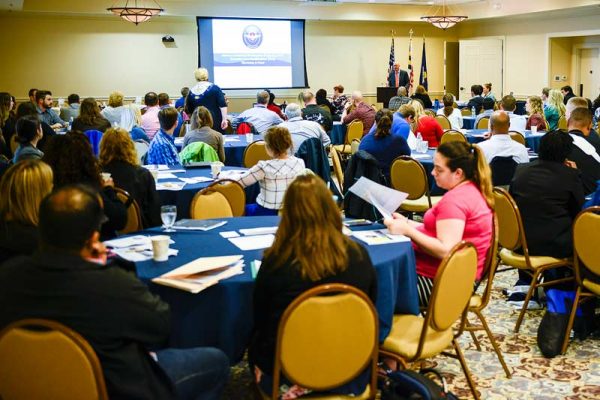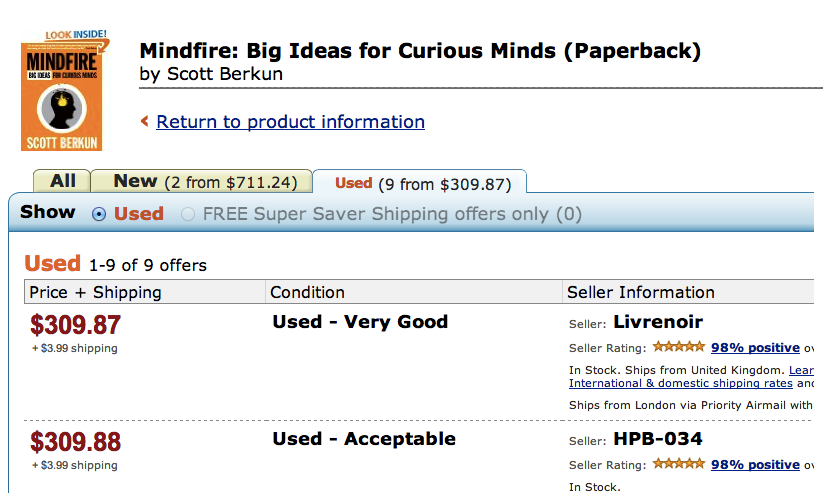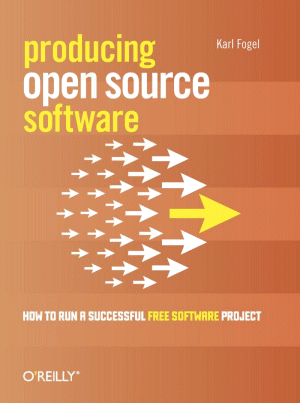Workshops are hopeful things. They’re sold on so much promise, but that promise is often dashed as students discover their expert instructor is far from an expert at teaching them how to learn anything.
For years I was a workshop guy: I taught them, I studied them, I even hired people to do them for other companies. I watched many instructors run them and I know the common mistakes. Here’s my best advice on how run a workshop people will love.
Rule #1: A 3 hour lecture is not a workshop
The word workshop implies that work will be done in a shop like atmosphere. This means the center of attention should be on the students doing work, not on the expert talking about their expertise. A cooking workshop means students cook things. A writing workshop means students write things. If most of your “workshop” is people not actually making anything, you should perhaps call it a class, a lecture, or a mistake.
Many experts are bad at teaching workshops because they are used to lecturing. A lecture has the spotlight on the speaker, but a workshop has the spotlight on each of the students.
The skills involved in designing workshops are very different for this reason. Instead of crafting a message for people to listen to, a good workshop is crafted to give students the opportunity for guided instruction in doing things. Many workshops are born from lectures, which explains why those workshops are so boring.
Rule #2: The more students you have, the less of a workshop it is
Better workshop instructors make larger groups feel more interactive, but beyond 20 or 25 people the instructor is spread thin. The common approach for large groups is to have people work in teams, as they at least get to be interactive with each other while the instructor is helping other students. In bad cases group work is a copout: the exercises aren’t interesting enough, or students struggle to work with annoying strangers who are too pushy or too passive. In better situations, when the students are motivated and the exercises well designed, it can work well (but likely not as potent as time spent being coached in a small group directly by the expert).
Designing exercises for groups of people to work together is hard. And also demands more testing to get right (see #5).
Rule #3: Work the triad: explain, exercise, debrief
The simplest way to construct a workshop is to think in units of 3.
- Walkthrough: Show how to do something.
- Exercise: Have everyone actually try to do that thing (while you wander around and help people one on one).
- Debrief: lead a discussion of where people got stuck, what parts were fun/hard/frustrating, and what things people learned, or realized they want to learn. Show people’s individual work, rather than your own, to the class to help explain your insights and observations, and as way to invite them to share theirs. Lead a healthy critique session.
- Repeat, with a more challenging thing.
These triads can be of different lengths 45 minutes (15/15/15 or 10/20/15) or longer. Its best to start with small things and build to a larger projects as the workshop goes on. It’s fine for the ratios to change. A more challenging exercise might be 1:3:1 (10 minutes, 30 minutes, 10 minutes).
Take breaks regularly. When people stand up and use their bodies for a minute or two their heart rate goes up, and they get energy back. It’s good for their bodies and minds to move around at least every hour or two. Gadget junkies can get their fix and people with biological needs can get that off their mind. Don’t see this as dead time: see it as taking a breather so everyone can bring more energy into the next exercise. Once every two hours is a good rule of thumb.
Rule #4: Stay out of the center
Workshop students come to learn and they can learn from other students often as much as they can from you. But they start as strangers to each other and you are the social link. Be friendly. Be conversational. Ask students who are good at something to help students who have questions on that thing. Do what you can to make everyone comfortable getting feedback from each other and not just from you (you can design exercises to make this happen naturally). The easy mistake is to center everything on you. This works for TV or lectures. This is a failure in a workshop.
Facilitation is the name of the game. It’s your job to create an environment where everyone is comfortable enough to take risks and learn some things. You should laugh, so they can laugh. You should be passionate so they can be passionate. At times you need to be a teacher, other times you’re game show host facilitating what’s going on, and other times you are quietly out of the way, helping people one on one.
Rule #5: Beta test your exercises
The top complaints workshop instructors hear is often “it was too easy” or “it was way too hard.” Using one exercise for 10 or 20 people guarantees a spectrum of experiences.
It takes a surprising amount of work to develop an idea for an exercise into something specific enough to be interesting, but flexible enough for different people. Since every student in a workshop will have different levels of skill, you want each exercise you use to have built in ways to make it harder or easier.
Great teachers let their students know it’s ok to raise their hand and say “Can you make this more/less challenging?” They’ve prepared wrinkles and twists to handle those cases.
It’s a great idea to beta test your exercises, if not the entire workshop. Do a dry run of half the workshop, for free, with the kind of people the workshop will be for. You’ll learn many little things to fix and adjust that will make a huge difference when you do it for the ‘first’ time.
There are tons of books with workshop exercises. If you poke around you can likely find a book for your discipline that will give you many ideas to start from. Many workshop exercises are horrifically lame, especially ice-breaker type games, but even those can inspire you to think of worthy ones.
Rule #6: Match promises to exercises
Each exercise should be about acquiring a skill, or at least having an experience that helps acquire a skill. List what you believe students will have learned, or experienced, by the time the workshop is over. Use that as your description for the workshop: it’s the promise you are making to students. If your workshop description has a promise than doesn’t map to a specific exercise, either change the description or change your exercises. You’ll find you need to limit your promises, which is good and realistic for everyone.
Rule #7: Always have a whiteboard or flipchart in the room
You never know when you, or a student, might need something big to write on to explain something. In corporate settings you’d be amazed how often the room you are supposed to teach in doesn’t have anything to write on. Digital whiteboards aren’t the same as they often break and take 5 minutes to figure out how to use. Flipcharts are cheap: always make sure there is one available.
Rule #8: The room should look like a workshop when you are done
If its been a true workshop there will be papers, drawings, diagrams, sketches, post-it notes and other made things all over the place. Tape the output of each exercise up on the walls so people can refer to them later. The room should look like a place where a real group of workers had been working on projects all day. Students should leave feeling like they’ve done work, and have some work they can take home with them if they choose.
Rule #9: Build a workshop checklist
There are many things to bring and remember. When you do your beta test of exercises, make notes on all of the equipment you need to bring (e.g. markers, pens, post-it notes, flip-charts, etc.), and what things students need to bring (of which you will have an extra set or two for forgetful students). You never want to have to waste time in the workshop searching or waiting for things. Build a checklist of all the things you need to bring, and put it all in briefcase or box so its ready to go.
Rule #10: Give students the next thing to do after they leave
Students didn’t come for the day: they came to keep learning. Have the next logical exercise or project available on your website, or in whatever materials you give them. Also include a small list of the best books or other resources they’re likely to need.






